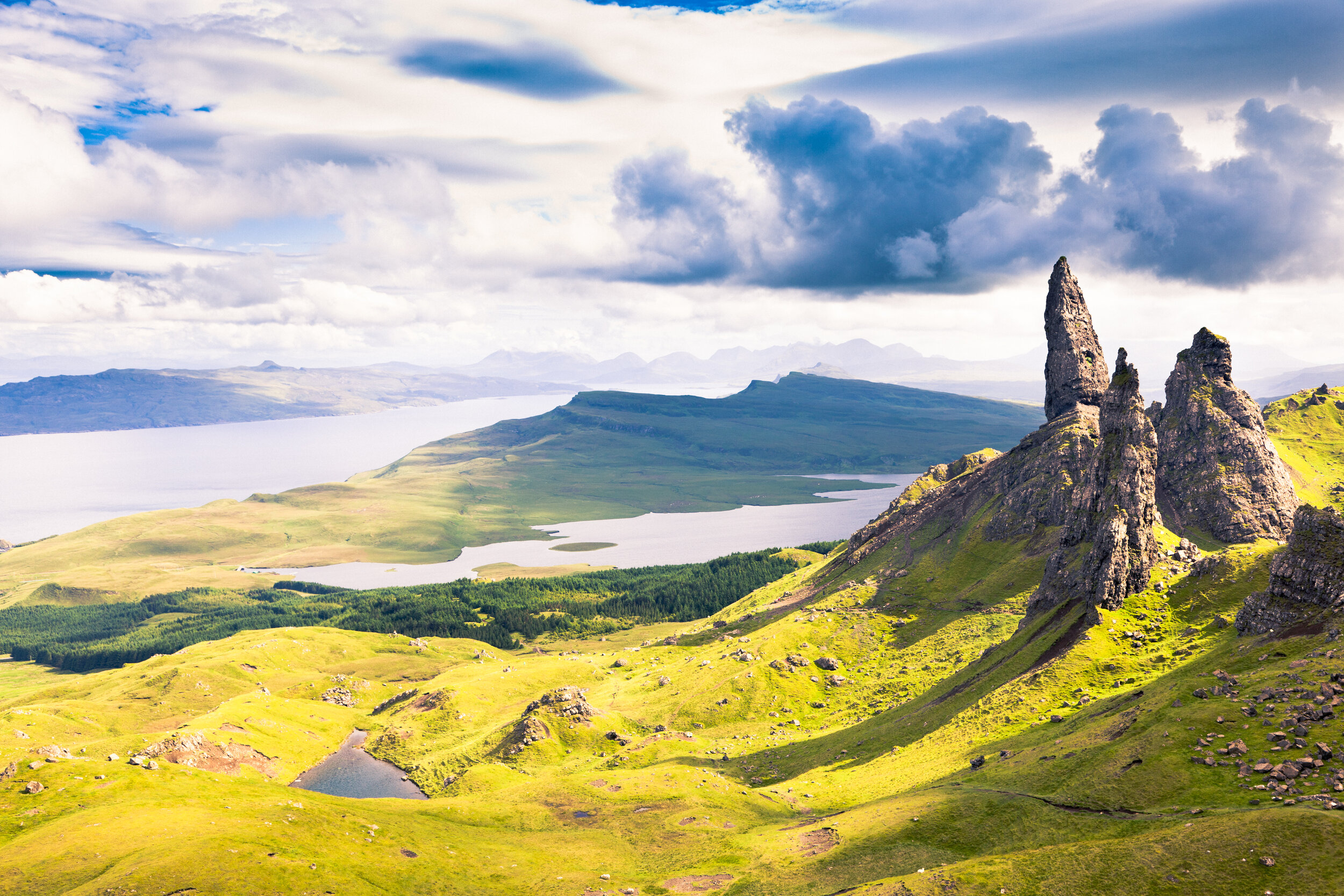Discover the Isle of Skye
The largest island of the Inner Hebrides, the Isle of Skye is a magical landscape of towering rock set next to a notched coastline of rocky outcrops and beaches. The mountains rise sheer out of the lowland plains and the combination of volcanic activity and erosion has produced some of the most fantastic rock formations in the country. For walkers, there are ways to appreciate all that Skye has to offer, from the peaks to the bays, and being on foot really is the best way to discover 'the misty isle' for yourself.
For walkers keen to see the mountains, Skye is home to three great sets of hills, the Black Cuillin, Red Cuillin, and the Trotternish Ridge. It's the Black Cuillin that make Skye famous for mountaineers; these great peaks are linked up on a long ridge that runs in a semi-circle near the southern coast. To do any of the peaks requires some scrambling, and the famous Inaccessible Pinnacle is the only Munro (3000 foot peak) to require rock climbing skills.
Regardless of whether you want to climb the Black Cuillin or not, you should certainly go and see them. There are a set of great paths leading down the mighty Glen Sligachan and over to Loch Coruisk, which is surrounded by the main peaks of the Black Cuillin and has to be one of the most impressive spots in the British mountains. The outlying peak of Blaven, also a member of the Black Cuillin, does have a path to the top that doesn't require scrambling, so it should definitely be on your list. On the western side Glen Brittle leads to the back of the Black Cuillin, where you can swim in the fairy pools and look up at the towering peaks above.
To the east of the Black Cuillin are the Red Cuillin, which are smaller and more rounded but still have steep sides. They get their names from the rock, the 'black' being from gabbro and basalt and the 'red' being from granite, giving the Red Cuillin a similar pink tinge to that seen in the Cairngorms. There are many excellent walks that take in the Red Cuillin, which do not require scrambling or climbing, and which give fantastic views back east over the water separating Skye from the mainland.
In the north stands the Trotternish ridge, a string of hills running up the long peninsula that leads from Portree, the main town on Skye, to the most northerly point on the island. The tops of these peaks may be grassy, but the eastern sides have been sculpted into incredible rock features by weathering and landslips, the most famous being the Old Man of Storr and the Quiraing. The great scarp faces can be explored from relatively low down, and anywhere along the ridge gives an excellent high level walk, easily climbed from the western side.
Alongside the mountains of course, the coast is an exciting place to explore, with crags looming straight down into the sea and the sheltered sea lochs providing respite for walkers wanting to look around but not up for the big peaks.
You will get the impression when on the western coast of being at the edge of the world, near where northern Europe ends and plunges into the Atlantic. The sky and sea can be moody, and the rain can sometimes be constant. But when it clears the view from anywhere over Skye is of a land born straight from a volcano, a totally unique place to walk and one of the most dramatic places in Britain.
Discover our full range of walks and tours to the Isle of Skye.


